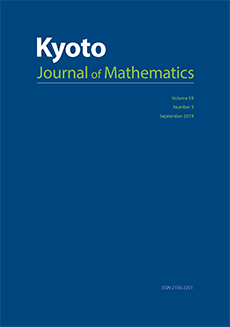We prove a number of results surrounding the Borsuk–Ulam-type conjecture of Baum, Dabrowski, and Hajac (BDH, for short), which states that given a free action of a compact group G on a compact space X, there are no G-equivariant maps (with ∗ denoting the topological join). Mainly, we prove the BDH conjecture for locally trivial principal G-bundles. The proof relies on the nonexistence of G-equivariant maps , which in turn is a strengthening of an unpublished result of Bestvina and Edwards. Moreover, we show that the BDH conjecture partially settles a conjecture of Ageev which implies the weak version of the Hilbert–Smith conjecture stating that no infinite compact zero-dimensional group can act freely on a manifold so that the orbit space is finite-dimensional.
Kyoto J. Math.
62(3):
523-545
(September 2022).
DOI: 10.1215/21562261-2022-0015
ACCESS THE FULL ARTICLE
It is not available for individual sale.
This article is only available to subscribers.
It is not available for individual sale.
It is not available for individual sale.





